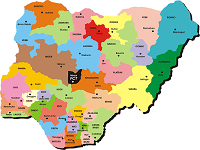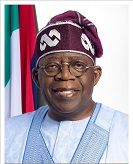 |  |  |
Map of Nigeria | President of Nigeria | Coat of Arms |
| Official Website: http://www.nigeria.gov.ng National Assembly: http://www.nassnig.org | ||
| Population: 140,431,790 (2006 Estimate) | ||
Government
Nigeria is a Federal Rupublic with a presidential system of government fashioned after the US model. This is made up of the Executive, Legislature and the Judiciary.
At the National level, the Executive is made up of the Presidency and the Federal Executive Council or Executive Council of the Federation (EXCOF), the Legislature is made up of the Senate and House of Representatives while the Judiciary is made up of Federal Courts of Appeal and the Supreme Court. The three arms are replicated at the state level. At the state level, the Executive is made up of the Governor, the Deputy Governor and the State Executive Council, while the Legislature is made up of the State House of Assemby while the Judiciary is made up of State High Courts
The Federal Capital
Today, Nigeria is administered as a federation of 36 states and a mayoralty (Abuja, the new federal capital). Each state of the federation has responsibility for generating revenue to finance its own activities complemented with revenue from the federal government, which has exclusive control over such ares as defense, external affairs, currency, mising, and the collection of custom duties, among others.
The 774 local governments constitute the third tier of government and the smallest unit of development closest to the grassroots. Local governments in Nigeria have residual authority over such local issues, such as garbage collection, primary school education, and community health centers. They are, by constitution, guaranteed a percentage of state and federal revenues with which to finance their specific responsibilities. The first local government elections held under the new political agenda was in 1990.
The Nigerian Coat of Arms
The shield, which is black, represents the good earth (soil) of Nigeria. The wavy bands of silver on the shield represent the River Niger and Benue, and their junction and confluence.
The supporters (two white horses) represent dignity. The ground on which the bearing stand is Cactus Spectabilis, which is a common wild flower throughout Nigeria.
The wreath is in Nigeria's national colors (green and white), and the eagle stands for strength. Unity and faith, peace and progress is the Nigerian motto.
The Nigerian Flag
The flag is divided vertically into three equal parts. The central part is white, and the two outside parts are green. The green of the flag represents agriculture, and the white part represents unity and peace.
 Nigerian Flag
Nigerian FlagNational Anthem and Pledge
Nigerian Senate
Nigerian House of Representatives




